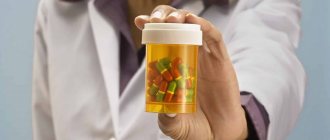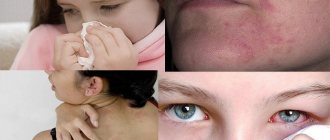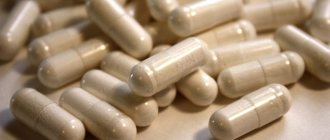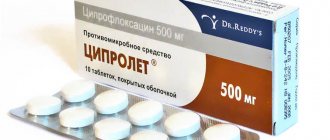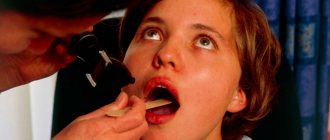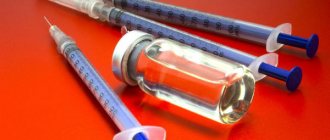Sinusitis is inflammation in the paranasal sinuses. The disease most often develops against the background of a prolonged cold or flu. Antibiotics are often prescribed as treatment for this pathology. Let's consider what groups of drugs are used for this disease, what adverse reactions may develop, and what complications are fraught with treatment without antibiotic therapy.
The target is pathogenic bacteria!
So, we have already figured out that sinusitis is an inflammatory process. This means that it is caused by pathogenic microorganisms. In healthy people, the maxillary sinuses are sterile. However, as a result of obstruction of the drainage paths, disruption of the activity of the ciliated epithelium and changes in the quality and quantity of mucus, the maxillary sinuses are colonized by pathogenic bacteria. The main causative agents of the inflammatory process in the maxillary sinuses include:
- Staphylococci, including S.pyogenes, S.aureus (Staphylococcus aureus), S.pneumonia, coagulase-negative staphylococcus;
- streptococci, including alpha-hemolytic streptococcus;
- fusobacteria;
- Moraxella;
- corynebacteria;
- peptostreptococci;
- Haemophilus influenzae.
I would like to note that in approximately 30% of cases of sinusitis, the infection is of mixed origin, that is, the number of pathogens is more than one.
Any inflammatory process accompanied by bacterial infection requires antibacterial therapy. No matter how much we would like, the body is not able to cope with the onslaught of pathogenic microorganisms on its own, and antibiotics are essential drugs for sinusitis.
Let's try to figure out what antibacterial drugs are prescribed for inflammation of the maxillary sinuses and when one or another drug is preferred.
>>We recommend: if you are interested in effective methods of getting rid of chronic runny nose, pharyngitis, tonsillitis, bronchitis and persistent colds, then be sure to check out this page of the site after reading this article. The information is based on the author’s personal experience and has helped many people, we hope it will help you too. Now let's return to the article.<<
Symptoms of the disease
Sinusitis occurs after a sore throat, scarlet fever, acute respiratory viral infection, measles, or influenza. This also happens as a result of dental diseases: deep caries and others.
Symptoms of the disease:
- mucous discharge. Subsequently, they acquire a green, and later a yellow (purulent discharge) tint,
- feeling of fullness in the sinuses,
- pain in the maxillary sinuses, headaches.
- the pain intensifies when a person bends forward. In the morning the pain is less pronounced, in the evening it increases,
- loss of strength accompanied by high fever. The chronic stage does not cause its increase.
X-ray allows you to make a correct diagnosis, determine the presence of pus and its level. Sometimes doctors offer an old technique - puncture of the paranasal sinuses. The method is painful, its use causes complications, so such diagnostics are rarely used by modern medicine.
What antibiotics should I take for sinusitis? General selection principles
When choosing an antibacterial agent, doctors, as a rule, are guided by general principles that are regulated in standard treatment protocols.
And acute sinusitis is no exception. What antibiotics are taken for sinusitis? Antibacterial agents prescribed for acute sinusitis are divided into three large groups.
First line drugs
This category includes drugs that are used primarily. It is these antibiotics that have maximum effectiveness for sinusitis and are used for treatment as the drugs of choice:
- Amoxicillin;
- Clarithromycin;
- Azithromycin.
Second line drugs
These agents are used to treat patients who live in environments with high rates of resistant microorganisms. In addition, reserve group drugs are used if first-line antibiotics do not give the desired result after 3–7 days of treatment for sinusitis. Second-line antibiotics include:
- Amoxicillin with clavulanic acid;
- cephalosporin antibiotics of the second and third generation;
- fluoroquinolones.
Injectable antibiotics
Patients with hospital-acquired sinusitis are a special category of patients whose treatment will require intravenous administration of antibacterial drugs. Among the most effective injection drugs we note:
- Meropenem;
- Imipenem;
- Cefuroxime;
- Ceftriaxone;
- Cefotaxime;
- Gentamicin;
- Tobramycin and other drugs.
To understand the specifics of using antibiotics for sinusitis, you will have to consider each drug in more detail. And we will start with the most popular antibacterial agent of the penicillin series - Amoxicillin.
Mistakes in treating sinusitis with antibiotics
Despite the widespread practice of using antibiotics for chronic sinusitis or acute forms of the disease, people often misunderstand their properties and make mistakes when using this group of drugs. What are these mistakes? Let's look at the most common myths and misconceptions:
- Antibiotics reduce fever. This is wrong! They fight pathogens of infectious diseases. As a result, the body destroys the remaining bacteria. After this, body temperature normalizes. Doctors do not treat sinusitis with any antibiotics in adults and children without control. Otherwise, patients risk serious complications.
- Antibiotics fight viruses. Again, signs of a cold, nasal congestion, general weakness and headache belong to the clinical picture of sinusitis of any nature. But for successful treatment it is necessary to understand the etiology of the disease. If the illness is caused by a virus, you should not think that any antibiotic will help. You need to use antiviral agents.
- Antibiotics will prevent sinusitis. Yes, antimicrobials can indeed prevent infection in some cases. They also make surgery safer. It also helps people with immune deficiency. However, if a person takes strong antibiotics to prevent sinusitis, this will not help him.
- A remedy that helps friends is a panacea. This is an erroneous judgment. Only a doctor can tell you which antibiotic a particular person should take for sinusitis. Firstly, the nature of sinusitis can be different. Secondly, there are allergies and idiosyncrasies - intolerance reactions. Don’t ask what antibiotic your friend took for sinusitis - it’s better to go to the doctor.
- Treatment of sinusitis with antibiotics at home can be carried out without a doctor’s recommendation. An otolaryngologist will tell you which antibiotic is effective for sinusitis. You cannot self-medicate so as not to provoke complications.
- Cheap antibiotics do not help with severe sinusitis. In fact, an effective antibiotic for bacterial sinusitis is determined individually. Sometimes inexpensive antibiotics for complicated sinusitis work better than expensive ones.
An increase in temperature is a sign of the body’s fight against the pathogen. Any antibiotic will help eliminate the bacteria from sinusitis. Improvement in well-being occurs due to the fight against infection.
Are penicillins the enemies of sinusitis?
Penicillins are deservedly among the most effective and safe antibacterial agents.
They can be prescribed to children, from infancy, to adults and elderly patients. In addition, penicillins are widely used in obstetrics. Drugs of the benzylpenicillin group belong to category B, conditionally permitted during pregnancy and lactation. The experience of prescribing these drugs in pregnant women proves the high safety and excellent tolerability of the drugs. Penicillins are the drugs of choice for many infectious diseases in pregnant women.
However, we must not forget that many strains of pathogens produce beta-lactamases, which destroy the beta-lactam ring of the antibiotic. The danger of prescribing penicillins for acute sinusitis is due to the fact that among the causative agents of the disease there are strains that produce beta-lactamases. That is, when treating sinusitis with unprotected antibiotics of the penicillin group, there is a hypothetical probability of the drug being ineffective.
Antibiotics that should not be used in children
The child's body is unable to cope with the toxicity of some medications. Therefore, certain types of medications should not be used.
Gentamicin and Kanamycin
These antibiotics negatively affect hearing and negatively affect the functioning of the kidneys and urinary tract.
Tetracycline
The drug slows down the growth of bone tissue, changes the color of tooth enamel, and destroys it. It is possible to prescribe the drug, if an urgent need arises, for children over 8 years of age.
Does Amoxicillin help with sinusitis?
The effect of Amoxicillin , one of the most famous antibiotics from the group of semisynthetic penicillins, for sinusitis was studied by American scientists.
The randomized, placebo-controlled trial included 166 adults with acute bacterial sinusitis. Of this group, 85 lucky people received Amoxicillin, and 81 people received a placebo. The course of treatment was 10 days. Who do you think is luckier? The results of the experiment were quite unexpected. On the third day of therapy, there was no difference in well-being between the two parallel groups. On the seventh day of the study, volunteers taking antibiotics reported feeling better. These data were confirmed laboratory. However, the story did not end there.
On the tenth day of the experiment, 80% of patients from both groups reported a significant improvement in their health or complete recovery. The results of a study on the comparative effectiveness of the antibacterial agent Amoxicillin and placebo in the treatment of sinusitis showed that the effect of unprotected penicillin is practically no different from the effect of a pacifier.
When prescribing Amoxicillin, one should not forget that about 64% of S.pneumoniae staphylococcus strains are resistant to penicillin. And Staphylococcus aureus is “famous” for its resistance to unprotected antibiotics of this group, reaching 90% and above. According to American scientists, the resistance of Haemophilus influenzae to Amoxicillin ranges from 27–43%.
And yet, despite all this very contradictory information, Amoxicillin (or Flemoxin ) until recently was used to treat uncomplicated forms of sinusitis as the antibiotic of choice, especially for children. Moreover, the drug was recommended as one of the three first-line antibiotics, that is, those drugs that are prescribed first.
Let us recall that the activity of Amoxicillin extends to strains of streptococcus pneumoniae, Haemophilus influenzae and anaerobic bacteria. The drug has a moderate effect on moraxella and is not effective against infection with bacteria that produce beta-lactamase.
According to information published by American scientists, the effectiveness of treatment of sinusitis with high doses of Amoxicillin is 80–90%. The high safety of penicillin antibiotics allows Amoxicillin to be widely used for sinusitis in children.
Dosages of Amoxicillin for uncomplicated sinusitis are quite impressive and are almost twice as high as the standard dose. Experts recommend prescribing about 80–90 mg of Amoxicillin per kilogram of body weight per day. The daily dose must be divided into two doses. It is better to take the drug after meals. The duration of treatment is usually 5–7 days.
Contraindications to the use of antibiotics
Conditions when a medicine for sinusitis in adults or children does not provide a therapeutic effect and may be dangerous are called contraindications. Each antibiotic has its own specifics, so it is necessary to take into account all factors that can negatively affect health.
When prescribing antibiotics, anamnesis of the disease is important, that is, collecting information about previous diseases, medications, their positive and negative effects.
List of contraindications:
- Kidney and liver diseases. The effect of antibiotics on chronic diseases is negative,
- Childhood,
- Allergy,
- Pregnancy and lactation, when the female body is most sensitive to the effects of chemical compounds.
Antibiotics are especially dangerous in the first trimester (possible termination of pregnancy). It is allowed to use medications if there is a threat to the life of the mother or fetus. During lactation, taking medications, you need to stop breastfeeding.
It is unacceptable to drink alcohol together with antibiotics. It causes nausea, vomiting, convulsions, and can be fatal.
Therefore, only a doctor will decide which antibiotics to take for sinusitis. He will be guided by the individual characteristics of the patient, possible manifestations of allergic reactions, and concomitant chronic diseases. The main thing is to prescribe adequate treatment, according to the laboratory and clinical examination.
Macrolides - antibiotics for sinusitis No. 1
The antibiotics of choice for the treatment of sinusitis include drugs from the macrolide group.
Macrolides do not contain a lactam ring, so the notorious penicillinase is absolutely powerless in relation to these drugs. This means that macrolides also effectively act on strains of microorganisms that produce beta-lactamases. Macrolides, compared to penicillins, exhibit much greater activity against the bacterium Moraxella catarrhalis (Moraxella).
I would like to add that macrolides are the drugs of choice for allergies to penicillin antibiotics.
Among the drugs that most widely cover the spectrum of potential pathogens of acute sinusitis, Clarithromycin and Azithromycin are recognized as the most effective and safe. Let's try to understand the advantages and disadvantages of each of these antibiotics.
Clarithromycin
This drug belongs to the second generation macrolides and has high activity against all microorganisms, without exception, associated with acute and chronic sinusitis.
For sinusitis, 500 mg to 750 mg of Clarithromycin twice a day, and the pediatric dosage of the antibiotic is 7.5 mg per kilogram of body weight per day. It is better to use the medicine at regular intervals.
The course of treatment is from 7 to 10 days. The final decision on the dosage and duration of therapy is made by the attending physician.
Azithromycin
Azithromycin is a 15-membered macrolide. The main difference between an antibiotic and other drugs is its long half-life. Thanks to this property, Azithromycin has a completely unique course of treatment.
For the treatment of sinusitis in adults, Azithromycin is used in a dosage of 500 mg once on the first day of therapy, after which it is sufficient to drink 250 mg of the antibiotic once a day for four days. Thus, the course of treatment for acute sinusitis is only five days.
Antibiotic treatment: when to prescribe and how to take it
Today, a wide range of antibacterial drugs are used in medical practice for treatment. There are modern medications that have proven themselves in the fight against sinus inflammation. Also, old proven antibiotics remain in use, which have a positive effect on the course of the disease.
Streptococcus aureus, the causative agent of the disease, can become accustomed to the action of the same antibiotic over time. Therefore, in case of a chronic disease, the means of treatment must be changed after consulting with an ENT doctor in advance.
Find out if there is a fever with sinusitis here.
Some are afraid to use antibiotics, so they ask to be prescribed something mild. However, such treatment will not bring a positive result, but will only worsen the healing process. On the other hand, a frivolous attitude towards taking strong antibiotics (irregular, incorrect use) can disrupt the immune system and not give the desired effect.
Antibiotics are prescribed in combination with various medications: tablets, sprays or nasal drops. If symptoms of intoxication occur, injections may be prescribed to administer the antibiotic intramuscularly.
How to properly massage for sinusitis is described in the link.
Antibiotics for the nose in the form of drops or sprays are particularly effective. When used correctly, the active ingredients of the medication are delivered directly to the affected area. This local effect speeds up the healing process. In order for the antibiotic to reach the inflamed mucous membrane in the paranasal sinuses, it is necessary to first instill the nose with vasodilating drops, and then inject a spray or drop drops with the antibiotic. Inhalations with antibiotics, for example, fluimucil, are also effective. It is especially effective in removing pus. You may also be interested in a list of names of antibiotic drops.
When choosing an antibiotic, you need to familiarize yourself in advance with the presence of side effects, as well as the method of removing it from the body.
List of effective drugs
- Bioparox is a representative of a modern series of antibiotics that has antibacterial and anti-inflammatory effects. Belongs to the group of polypeptide agents that fight bacteria at the local level. Effectively copes with streptococci, fungi, staphylococcus and anaerobes.
- Isofra is a drug consisting of representatives of aminoglycosides. The antibiotic is used in the form of a spray and sprayed locally into the paranasal sinuses where inflammation has formed. Destroys microorganisms that are gram-negative and gram-positive. The drug has an antibacterial effect on the mucous membrane.
- Azithromycin is a drug that has a bactericidal effect. A positive result is observed when the lesion is saturated with the main anti-inflammatory substance contained in the antibiotic. This antibiotic also helps get rid of the symptoms of frontal sinusitis in adults.
- Macropen belongs to the group of macrolipids. It is a strong drug that has a detrimental effect on the proliferation of bacteria on the mucous membrane. In addition, Macropen destroys a number of gram-negative and gram-positive microorganisms.
- Zitrolide is the most effective drug that is minimally likely to cause toxic reactions in the body. The drug is a representative of macrolides, which successfully copes with the spread of bacteria: anaerobic, gram-positive, gram-negative.
- Ceftriaxone is a new generation antibiotic that belongs to the group of cephalosporins. The drug is active against a large number of pathogens and causes a minimal number of unwanted side effects. The drug boasts a large number of positive reviews on the Internet.
How to do the “cuckoo” correctly for sinusitis
Second-line antibiotics: complicated and purulent sinusitis
As we have already mentioned, second-line drugs are prescribed if the causative agents of sinusitis are resistant to Amoxicillin and macrolides.
In this case, it is recommended to culture the material to determine sensitivity to antibiotics, but empirical prescription of drugs is also allowed. Useful information: Polydexa drops (spray): instructions, features of use for the nose, ears in children and adults
When can a doctor suspect a resistant infection and what symptoms indicate high resistance of pathogenic microorganisms?
Infection with resistant strains of bacteria is likely if the patient does not feel improvement within the first two to three days of first-line antibiotic therapy. That is, if after three days of taking Amoxicillin or Clarithromycin you still have symptoms of intoxication - fever, weakness and headache - you must immediately notify your doctor. Most likely you will have to select an alternative antibiotic.
Second-line antibacterial drugs that are indicated for the treatment of sinusitis include protected penicillins, cephalosporins and fluoroquinolones. Let's take a closer look at these groups.
Features of antibiotic treatment for children and adults
It is better to treat preschoolers with penicillin drugs. Powders and medicinal suspensions are especially good. The most effective antibiotics for childhood sinusitis are Augmentin and Amoxiclav.
The doctor must determine which antibiotic is best for persistent sinusitis for a child. However, in children the disease is more often caused by mycoplasma and chlamydia. Penicillins do not cope with them. In such cases, the antibiotic Fromilid uno (suspension) is best tolerated by children for sinusitis. Other azalides and macrolides are also good.
As in children and adults, the selection of antibacterial therapy is carried out individually by the attending physician.
The problem is that the causative agent is often not identified. Then doctors choose which antibiotic can be taken for sinusitis in adult patients empirically. These are usually broad-spectrum antibiotics. Their list includes:
- Azitrox and other azithromycin derivatives;
- Amoxiclav;
- Lincomycin;
- Ceftriaxone.
To prescribe specific and, importantly, sensitive therapy, microbiological examination of the discharge of the paranasal sinuses should be carried out. In cases where the causative agent of sinusitis is confirmed by bacteriological examination, the antibiotic is chosen specifically taking into account the sensitivity of microorganisms. Let's list what antibiotics are taken for sinusitis with a known pathogen:
| No. | Bacteria or protozoan | Medicine |
| 1 | Streptococcus aureus | Sulperacef, Amoxiclav or Cefazolin |
| 2 | Streptococcus pneumoniae | Amoxiclav, Amoxicillin or Augmetin |
| 3 | Proteus mirabilis | Ampiox or Amoxacillin |
| 4 | Haemophilus influenzae Pfeiffer-Afanasyev | Sumamed or Suprax |
| 5 | Branhamella catarrhalis | Sumamed or Amoskyklav |
When a doctor decides which antibiotics a particular patient needs for sinusitis, he takes into account his individual characteristics. The age of the patient, the presence of contraindications, and possible side effects are important. The characteristics of the course of the disease are also taken into account.
In addition, this is how the duration of therapy is determined. Sometimes it is enough to take an antibiotic for only 3 days for mild sinusitis. However, in other cases, treatment takes a week or even several weeks.
Protect Amoxicillin!
We have already said that a particular problem in selecting an antibiotic for the treatment of sinusitis is the presence of beta-lactamase-producing strains among the causative agents of the disease. Therefore, the ideal treatment for acute sinusitis includes a procedure such as sowing the contents of the maxillary sinuses and determining sensitivity to antibiotics. This test allows you to identify the pathogen and select an antibacterial agent that is active against the microorganism.
However, not everything is as simple as it seems. After all, to obtain the material it is necessary to perform a puncture, and this is a very serious procedure. Therefore, doctors, as a rule, have to act almost at random, and treatment is prescribed empirically. The doctor’s main task at this stage is to select exactly the antibiotic that will work. In the vast majority of cases, ENT doctors avoid prescribing Amoxicillin and go straight to second-line drugs.
Unprotected penicillins are being replaced by complexes with clavulanic acid. They have all the advantages of Amoxicillin and do not have its main disadvantage - vulnerability to penicillinase.
The most popular protected penicillins, which are often used for sinusitis, include tablets Augmentin , Amoxiclav , Flemoclav and other antibacterial drugs. Experts say that Amoxicillin and clavulanic acid complexes are effective in more than 90% of cases of sinusitis.
For sinusitis, it is recommended to take 500-1000 mg of protected Amoxicillin twice a day. The final dosage and course of treatment is determined by the attending physician.
Brief description of antibacterial agents
Until recently, Amoxicillin was one of the most popular drugs in the penicillin group. Later, doctors began to note a decrease in the effectiveness of treatment during the period of its use. This prompted the use of other drugs in this group.
Amoxiclav
The drug works when other penicillin antibiotics cannot overcome the infection. The active ingredients of the drug are amoxicillin and clavulanic acid. Their combination allows you to destroy bacteria and prevent the spread of infection.
Amoxiclav has almost no negative effect on the gastrointestinal tract. The antibiotic components are quickly absorbed and easily penetrate the body tissues. The duration of treatment for a mild form of purulent sinusitis is 5 days.
To prevent dysbiosis, take the drug together with probiotics.
Important! The use of antibiotics is useless against bacteria that have a destructive effect on penicillins.
Recently, doctors have noted the formation of resistance to antibiotics of the penicillin group. Therefore, cephalosporins are often the starting drugs for the treatment of sinusitis.
Cefuroxime
The drug is available in tablets, granules for making a suspension, solution for intramuscular or intravenous injection. It has high activity against gram-negative and gram-positive bacteria.
It has virtually no effect on the positive intestinal microflora. Doctors rarely note the presence of resistance to it.
The great advantage of macrolides is that they are not destructive to the intestinal flora, but exhibit a therapeutic effect only at the site of inflammation.
Azithromycin (Sumamed)
The most famous of antibiotics. The advantages include the fact that all microorganisms that cause the disease are sensitive to the drug, and its relative safety. The drug has a long half-life, so it is used once a day. Take 5-7 days. In the chronic form of the disease, the duration of treatment is determined by the doctor.
The medicine does not cause addiction or the development of resistant strains of bacteria if taken for a long time.
With all the positive properties of drugs, you should not decide on your own which antibiotic is better. You need to leave the issue to your doctor. He will conduct the necessary examination and prescribe treatment.
Aids
Additionally, your doctor may prescribe nasal drops. They will make breathing easier and narrow blood vessels. An effective drug used for this purpose is Nazol, Galazolin.
Injections for sinusitis are prescribed if:
- oral medications were ineffective,
- in advanced cases, severe form of purulent sinusitis,
- due to the high risk of sepsis.
Cephalosporin antibiotics in tablets: alternative help for sinusitis
For sinusitis, second- and third-generation antibiotics from the group of cephalosporins are used as second-line tablets. These include oral forms:
- Cefuroxime;
- Cefpodoxime;
- Cefixima.
Cefuroxime
Cefuroxime is a second generation cephalosporin. Cefuroxime tablets are produced:
- the German company Sandoz called Cefuroxime-Sandoz;
- Glaxo Corporation ( Zinnat );
- Medokemi company (Cyprus) produces antibiotic tablets Aksef.
Cefuroxime has a pronounced effect on the vast majority of pathogens of acute sinusitis, including strains that produce beta-lactamase. The standard dosage is 250 mg cefuroxime twice daily for 7–10 days.
Cefpodoxime
Cefpodoxime is a third generation cephalosporin. The main difference between these antibiotics and second-generation drugs is their high activity against gram-negative flora. In addition, injectable drugs of this group have very high bioavailability, while oral drugs, on the contrary, are poorly absorbed in the intestine.
One of the most common drugs containing cefpodoxime is Jordanian Cefodox, which is available in the form of tablets of 100 and 200 mg, as well as a children's suspension in several dosages. In addition, Indian Cepodem is registered in Russia. Note that most doctors prefer to prescribe the Jordanian analogue.
Cefodox has a fairly low level of absorption - only about 52%. Therefore, when prescribing this tablet antibiotic for sinusitis, the doctor must take into account the low bioavailability of the drug.
The dosage of cefpodoxime for acute sinusitis is 200 mg twice daily for 7–10 days.
Cefixime
The drug also belongs to the third generation semisynthetic cephalosporins.
I would like to draw your attention to the fact that Cefixime is inactive against many gram-positive bacteria. Thus, most strains of Staphylococcus aureus are resistant to this antibiotic. Just like Cefpodoxime, Cefixime is poorly absorbed from the gastrointestinal tract: the bioavailability of the drug is only 40-50%.
As a common analogue of Cefixime, we will name the antibiotic Suprax, which is also available in a dispersible form, which has higher bioavailability. In addition, in Russian pharmacies you can find the Indian analogue Ixim and the medicine produced in Macedonia Pancef.
Combination of cephalosporins
American experts recommend not using third-generation cephalosporins as monotherapy for the treatment of sinusitis due to the fairly high probability of bacterial resistance to these antibiotics. The combination of Cefixime and Cefpodoxime is capable of covering almost the entire spectrum of pathogenic bacteria associated with sinusitis.
Thus, one of the most effective alternatives to protected penicillins is the use of two cephalosporins at once - Cefpodoxime and Cefixime.
Fluoroquinolones
According to experts, the effectiveness of these antibiotics for acute purulent sinusitis is more than 90%.
Well-known and effective fluoroquinolone antibacterial drugs that are used to treat acute and chronic sinusitis include:
- levofloxacin;
- moxifloxacin (Avelox).
Note that fluoroquinolones are contraindicated for use in children and adolescents. This is associated with the risk of developing irreversible changes in the structure of cartilage tissue. However, for health reasons, fluoroquinolones are still used in childhood.
When are antibiotics needed?
Mild disease requires treatment at home. Use nasal drops, rinse, inhalation.
In more severe forms, treatment of sinusitis with antibiotics is necessary. Symptoms for prescribing antibacterial drugs:
- severe pain in the sinuses,
- low-grade fever,
- purulent nasal discharge,
- severe intoxication.
The cause of the disease and its causative agent are determined. This is necessary to choose the right antibiotics for sinusitis. In some cases, the medicine is ineffective if the disease is caused by a fungal infection or allergic reactions.
Important! Before starting treatment, it is necessary to establish the cause of the disease, otherwise antibiotics will aggravate its course. There will be a risk of serious complications, and recovery will take a long time.
When are antibiotic injections used for sinusitis?
We have come to a description of one of the most pressing problems faced by patients suffering from acute sinusitis.
The fact is that domestic ENT doctors, in their undoubtedly noble desire to quickly relieve the patient of the symptoms of sinusitis, vying with each other to prescribe injectable drugs. Doctors eloquently convince their patients of the urgent need for parenteral treatment as the only possible path to healing. Exhausted by the lack of a breath of fresh air, patients, of course, believe the all-powerful man in a white coat and obediently follow to the pharmacy for a set of syringes, bottles of antibiotics and lidocaine.
This is followed by seven or even ten days of procedures, and then treatment of the consequences of injection therapy. Of course, after such therapy the disease recedes. However, are antibiotic injections really necessary for sinusitis?
According to leading experts in the field of otorhinolaryngology, parenteral use of antibiotics is indicated for patients with hospital-acquired acute sinusitis. In such cases, the infection is usually caused by highly resistant gram-negative microorganisms. The drugs of choice include aminoglycoside antibiotics. To correctly select an antibacterial agent, it is recommended to inoculate the culture and determine the sensitivity of the inoculated bacteria.
Let us consider the dosages and spectrum of activity of parenteral antibiotics in more detail.
Aminoglycosides
The most effective drugs include Tobramycin and Gentamicin. It is worth noting that both antibiotics are not active against streptococci and other anaerobic bacteria. Moraxella and Haemophilus influenzae, on the contrary, are highly sensitive to the action of aminoglycosides.
The dosage of Tobramycin and Gentamicin is calculated depending on the patient’s weight: per kilogram of weight there is 1.7 mg of antibiotic. Frequency of application: twice a day.
It is worth noting that the use of aminoglycosides is associated with a high risk of side effects. One of the most dangerous adverse events associated with treatment with these drugs is damage to the auditory branches, resulting in irreversible deafness. Therefore, Tobramycin and Gentamicin are used exclusively under the supervision of a physician.
Second generation cephalosporins
Cefuroxime is practically the only second-generation parenteral cephalosporin antibiotic used for the treatment of acute sinusitis. Injectable medicines containing cefuroxime as an active ingredient are lyophilized powder that must be diluted before use. The most commonly used solvents are water for injection and 2% lidocaine solution.
To treat sinusitis, 1 gram of Cefuroxime is prescribed every eight hours. One of the most famous drugs in Russia containing cefuroxime is Zinacef.
Third generation cephalosporins
Injectable agents in this group include Cefotaxime, Ceftazidime and, of course, the well-known Ceftriaxone. Third generation cephalosporins are highly active against gram-negative microorganisms.
The recommended dosage of antibiotics for the treatment of severe sinusitis is:
- Cefotaxime is prescribed 2 grams every 4–6 hours;
- Ceftriaxone - 2 grams per day, divided into two doses;
- Ceftazidime is used at a dose of 2 grams every 8 hours.
Carbapenems
Severe cases of acute purulent nosocomial sinusitis require the use of potent broad-spectrum antibiotics - carbapenems. These drugs are used exclusively in a hospital under the supervision of specialists.
Classification of antibiotics used for sinusitis
Modern medicine offers a large selection of drugs to eliminate the cause of the inflammatory process in the sinuses. All antibacterial drugs according to their mechanism of action are divided into:
- Bactericidal. They destroy bacteria and provoke their death.
- Bacteriostatic drugs. Prevent pathogenic microorganisms from growing and developing. However, the bacterial cells themselves remain alive and are eliminated by the patient’s immune system.
What antibiotics to take for severe sinusitis should be decided by the attending physician. After all, the characteristics of the patient’s body and the course of the disease are always individual. Antibiotics often lead to complications if used incorrectly.
Depending on the form of release and method of use, antibiotics against sinusitis are divided into two groups. The first of them is local. They are used to treat the nasal passages - these are ointments and solutions for rinsing the nose. The second group is system tools. These products are used in the form of injections or tablets, as well as capsules.
In this case, systemic drugs are almost always used. Local antibiotics for the treatment of sinusitis in adults and children are just an addition to them. Sprays, antibiotic nasal drops or solutions for rinsing the paranasal sinuses may be prescribed as the main treatment only for mild forms of the disease.
From the point of view of the main active ingredient, antibiotics that treat purulent sinusitis are also divided into several types. Each group affects a specific bacterial spectrum. Let's list them:
- penicillins;
- cephalosporins;
- azalides and macrolides;
- fluoroquinolones;
- fusafungine;
- lincosamides;
- sulfonamides;
- tetracyclines.
Antibacterial drugs of the penicillin series
Their main effect is bactericidal. Moreover, they destroy various types of pathogenic microorganisms. Therefore, penicillins are widely used to treat inflammatory processes.
However, there are bacteria that destroy penicillins. Therefore, pharmacists developed protected medications. In addition to penicillin, they contain clavulanic acid.
Unpleasant consequences of treatment with such drugs are rare. However, the wrong dosage of an antibiotic is fraught with side effects from the gastrointestinal tract. Allergic rhinitis and other manifestations of individual intolerance are also possible.
Most often, penicillin antibiotics for bacterial sinusitis are taken in tablet form. However, for the treatment of children, medicine offers penicillin suspensions. Their taste is improved with fruit fillers. Let's list which antibiotics for annoying sinusitis are penicillin:
- Flemoxin;
- Amoxicillin clavulanate;
- Hiconcil;
- Flemoclav;
- Amoxiclav;
- Augmentin.
Cephalosporins
If a patient requires treatment of chronic sinusitis with antibiotics, the doctor may prescribe cephalosporins. Their chemical structure is similar to penicillin, but they are more resistant to penicillin-resistant microorganisms.
Experts identify five generations of such drugs. Each generation of cephalosporins has a specific structure and spectrum of therapeutic action. The first, second and third generation drugs are effective against sinusitis:
- Cefazolin;
- Cefuroxime;
- Ceftriaxone.
For severe forms of sinusitis, these antibiotics are used both intravenously and intramuscularly (solution) and orally (tablets). However, if the medicine belongs to the group of cephalosporins, people with allergies should treat this drug with caution. Cephalosporins and penicillins are related groups of drugs, so intolerance to one group means a similar reaction to the other.
Azalides and macrolides
These are bacteriostatic drugs that act on chlamydia and mycoplasma. This means that they stop the development of intracellular pathogens of acute sinusitis. The best modern antibiotics for sinusitis for allergy sufferers, since they are not related to the two previous groups. Therefore, if cephalosporins for sinusitis cannot be prescribed to you, azalides are an excellent solution.
Azalides and macrolides for sinusitis are good because they only need to be used once every day. Moreover, short courses of treatment with similar antibiotics can be periodically carried out - chronic sinusitis requires just such a solution.
Representatives of this group of drugs include:
- Macropen;
- Clarithromycin for sinusitis;
- Sumamed;
- Fromilid;
- Erythromycin.
These drugs are available in various forms. These can be capsules, tablets and even powders.
Aminoglycosides
They destroy mainly gram-negative bacteria, although they are also effective against other types of microorganisms. However, this group of drugs is used exclusively in severe cases. Aminoglycoside therapy is characterized by an increased risk of side effects.
However, an otolaryngologist prescribes aminoglycosides for sinusitis if other means do not help. Systemic antibiotics for colds (sinusitis) are reserve drugs. But local remedies are allowed. The list of aminoglycosides for topical use for sinusitis includes Isofra and Polydexa. The first representative of this group of semisynthetic drugs contains framycetin, and the second contains neomycin.
Fusafungins
They perfectly speed up the healing process of a sick person due to their anti-inflammatory effect. Fusafungin is a topical antibiotic. A well-known drug with this active ingredient is Bioparox, which is available in the form of an aerosol. They treat the nose, as well as the ears and throat, if necessary.
Equipped with a special dispenser and nozzles. An effective antibiotic for incipient sinusitis. However, in severe cases of the disease, it is better to use it in combination with systemic agents.
Fluoroquinolones
Included in the list of effective antibiotics for bacterial sinusitis. Destroy pathogens. Represented by several generations of drugs. Sinusitis is treated with the first two. Known fluoroquinolones:
- Ofloxacin;
- Levoflokasacin and Levolit;
- Ciprofloxacin.
For purulent sinusitis, these antibiotics are very helpful. However, they need to be treated under the guidance of a doctor. May have local or systemic effects.
Lincosamides
Bacteriostatic and bactericidal agents. Excellent antibiotics for acute sinusitis, although they also help with chronic ones. But this is still a backup option for treating sinusitis. Well-known representatives are Dalatsin and Clindamycin.
Polymyxin therapy
Polymyxins are included in the list of specific antibiotics for sinusitis. Destroy Pseudomonas aeruginosa. Not applied systematically. Polymyxin "B" is one of the components of Polydex nasal spray.
Sulfonamides
They have an antibacterial effect. Widely known in the treatment of diseases of the ENT organs. Popular representatives today are Streptocide and Sulfamide.
Such antibiotics can cure sinusitis. However, doctors prefer more modern drugs to avoid side effects.
Tetracyclines
Effective against a huge number of bacteria. However, they are less effective than penicillins if the pathogen is a gram-positive microorganism. Therefore, they rarely treat sinusitis. For sinusitis, tetracycline tablets are used only for sinusitis in adults.
Antibiotic drops for sinusitis: necessary or useless?
Many patients ask the same question: do antibiotic nasal drops and sprays help with sinusitis?
Is it worth using them? And is it possible to get by with local remedies without resorting to oral, that is, tablet medications? It's time to clear all doubts. If you are diagnosed with sinusitis, you need to be prepared for the fact that it is almost impossible to cure without antibiotics - a bacterial infection simply requires adequate therapy. Local preparations - sprays and nasal drops - containing an antibacterial active substance are not able to penetrate the maxillary sinuses. Consequently, their use is practically meaningless. So, let us emphasize: for acute and chronic sinusitis, nasal drops or antibiotic sprays are simply ineffective.
The only way out in this situation is oral, and in severe cases, parenteral (injection) antibacterial agents.
Possible side effects after taking
Antibacterial therapy can not only relieve sinusitis, but also lead to a number of side effects. With adequate selection of the drug and dosage, undesirable consequences can be avoided. But the doctor is still obliged to warn the patient about the following side effects:
- swelling of the throat and face;
- redness of the skin or rashes on the skin;
- discomfort in the nasal cavity (after using Isofra or Polydex);
- labored breathing;
- dizziness, fainting;
- disruption of the gastrointestinal tract.
If any symptom occurs, you should seek medical help; you should not self-medicate.
Prescribing antibiotics is the doctor’s task
I would like to draw your attention to the fact that the selection of the correct antibacterial drug is the prerogative of the ENT doctor.
We must not forget that among the causative agents of acute sinusitis there are also antibiotic-resistant strains that are insensitive to penicillins and cephalosporins. Therefore, self-prescription of an antibiotic for sinusitis may result in serious complications rather than the desired recovery. Remember that at the first signs of sinusitis you need urgent consultation with a specialist and immediate antibacterial treatment.
Antibiotics prescribed for children
Prescribing medications to children is possible after a correct diagnosis, according to strict indications.
Attention! Children are prescribed antibiotics for sinusitis by their pediatrician until they reach the age of 3 years. Parents should remember that uncontrolled use of medications can cause serious complications.
Antibiotic treatment for children is longer. The course of their use is from 10 to 14 days. This is due to the fact that in order to cure sinusitis, the required dose of medicine must accumulate in the mucous membrane of the maxillary sinuses. Therefore, you cannot stop treatment if there is visible improvement.
Broad-spectrum antibiotics are usually chosen.
From the group of penicillins that are indicated for children:
| Drugs | Photo | Price |
| Amoxiclav | from 10 rub. | |
| Augmentin | from 134 rub. | |
| Amoxicillin | from 64 rub. |
These drugs do not cause bacterial resistance and have a broad spectrum of action.
The most popular of the macrolides is Sumamed; Clarithromycin and Hemomycin are also used. The first drug is preferable because its use does not cause intestinal upset or cutting pain in the abdominal area.
Medicines from the cephalosporin group, approved for children over 3 years of age:
- Zinatsef,
- Zinnat,
- Aksetin.
They are used when other medications have been ineffective.
It is important to determine how much of the active substance can defeat the disease. The dosage is prescribed by the doctor. It cannot be reduced if the patient feels improvement. The reverse process will begin immediately. Bacteria will develop resistance, evolve, and become stronger. The disease will manifest itself with renewed vigor.
Spray "Isofra"
The nasal remedy is very effective for inflammatory processes in the nasal sinuses. The active ingredient is the antibiotic framycetin sulfate, which belongs to the group of aminoglycosides. The substance is capable of suppressing the development of pathogenic microflora and has a wide spectrum of action.
Local antibiotics used for sinusitis and sinusitis are most effective as part of complex therapy. Before using them, you should first rinse the nasal cavity with saline solution to get rid of mucus accumulations. The dosage of Isofra spray is determined depending on the age of the patient. Adults are advised to use the medicine up to 5 times a day, and children - no more than three times a day. The duration of medication treatment is 7-10 days.
Penicillins
As for the names of penicillin antibiotics used for sinusitis in adults, we can talk about Amoxiclav, Augmentin, Amoxicillin. These medications have demonstrated their effectiveness in practice, especially during an exacerbation.
Most often, these antibiotics for sinusitis in adults are available in tablets. In addition to successfully combating the direct pathogens of the disease (that is, bacteria and viruses), they ensure the prevention of complications such as meningitis, otitis media and other inflammations.
Within three days after the start of the treatment process, the patient should feel much lighter.
When you need to fight the acute form of the disease, Augmentin, Macropen, Zitrolide help. However, some patients do not tolerate penicillins too well: in this case, they can try something from tetracyclines and/or macrolides, like Ampicillin or Amoxicillin.
Ampicillin is indispensable for exacerbation of inflammation of the maxillary sinuses
When choosing a particular antibiotic drug, the doctor pays attention to:
- results of the analyzes performed;
- what condition the patient is in;
- features of the course of the disease.
If you choose a drug that is too weak, you will not be able to achieve the desired effect.
Topical medications are often combined with antibiotics. Usually these are nasal drops or sprays.
Almost always, along with antibacterial drugs, doctors prescribe antihistamines, which help reduce swelling and reduce the risk of allergic reactions.
Antibiotics for children
When sinusitis develops in children, pediatricians try to prescribe antibiotic treatment only in severe cases. This usually happens in advanced forms of the disease, when the life and health of the baby is at increased risk. It is also advisable to use them when the disease enters the chronic stage.
Important! Before using such products, parents are required to consult a doctor. The prescription of medications depends not only on the course of the disease and the symptoms that appear, but also on the age of the child.
Typically, an otolaryngologist prescribes modern topical antibiotics. That is, the activity of the drug manifests itself only where the source of infection is localized.
Bioparox has these properties. There are also analogues - Fusafungin and Hexoral. These are special sprays that act exclusively on the mucous membrane of the mouth and nose. They have virtually no side effects. Antibiotics are prescribed to children for no more than 1 week. After Bioparox, dryness in the nasal cavity is often observed.
The most effective medications for a child:
- Amoxicillin. If necessary, it can be given even to newborns.
- Flemoxin Solutab. It contains the antibiotic amoxicillin.
- Cefuroxime.
- Polydex and Isofra. These are modern sprays. The first is used for children over 2.5 years old, and the second - from 1 year.
- Sumamed. The second name of the drug is azithromycin. It belongs to the group of macrolides. This is the least toxic of all types of antibiotics for children. It can be produced in the form of suspensions and tablets.
Also, a sick child should undergo special procedures at home. The following methods are considered the most effective for children:
- nasal rinsing;
- inhalation;
- compresses.
Important! All methods of therapy for sinusitis and otitis media are used only after visiting a qualified specialist and consulting him. Complex treatment requires strict adherence to the doctor’s prescriptions.
Local antibiotics for sinusitis
Antibacterial agents for topical use are especially popular. They act directly at the site of the inflammatory process and do not have a systemic effect. They can be prescribed as monotherapy or as part of complex treatment. “Bioparox”, “Isofra”, “Polydexa” are effective antibiotics for rhinitis, sinusitis, and sinusitis of bacterial origin.
Antibiotics for topical use are available in the form of drops and sprays. They should only be used if there is free access to the paranasal sinuses.
Principles of proper treatment
A visit to the doctor and strict implementation of his recommendations will allow you to return to a full life in a reasonably short time and get rid of the symptoms of sinusitis:
- painful sensations in the area of sinuses infected with bacteria;
- from headaches and toothaches accompanying inflammation;
- heavy discharge;
- stuffy nose;
- lack of smell.
The rules that must be followed throughout the treatment are simple, but they guarantee effective treatment:
- follow the dosage exactly;
- take the entire course of medication, even if there is an improvement;
- If any side effects occur, visit a doctor; at the slightest allergy symptoms, immediately take an antihistamine;
- the absence of a therapeutic effect on the third day of taking the pills is a reason to visit a doctor.
Timely administration of an antibiotic is a guarantee of successful treatment of any type of sinusitis. Visiting a doctor at the first symptoms of the disease will greatly facilitate the treatment of an unpleasant disease.
Adverse reactions during treatment with antibiotics
The occurrence of side effects to antibiotics is a pathophysical process in which many factors are involved. The risk of side effects is determined by the properties of the antibiotic and the patient's response to it.
For example, it is known that the penicillin group of antibiotics is low-toxic, but in the human body penicillin causes an allergic reaction. The adverse reaction may also depend on the dosage of the drug used and the duration of treatment. The occurrence of adverse reactions depends on the form of antibiotics. These include nausea, vomiting, and diarrhea.
Effective antibiotics for sinusitis in adults
The names of some drugs have long been known in medical practice. For example, Amoxicillin is a protected penicillin and is often used to treat diseases of the ENT organs of bacterial etiology. A significant advantage of the drug is its safety and minimal side effects.
Another drug from the penicillin group, Amoxiclav, also belongs to the protected category. The drug is resistant to the enzyme beta-lactamase, which is found in many bacteria and significantly reduces the therapeutic effect of antibiotics.
For sinusitis, the following medications may be prescribed:
- "Cefalexin".
- Azithromycin.
- "Augmentin".
- "Cefazolin".
- "Flemoclav Solutab".
- "Sumamed."
- "Ceftriaxone".
- "Clarithromycin."
Many medications can eliminate the symptoms of inflammation in the paranasal sinuses. To understand which antibiotics to take for sinusitis in adults, you need to consult a doctor. The dosage of the medication and the treatment regimen are determined individually.
An effective local drug is Bioparox. Nasal spray has a bacteriostatic effect and is often used to treat sinusitis. Another remedy from this group is Polydex. The medicine contains two antibacterial substances. Local antibiotics are used for purulent sinusitis in adults not only to eliminate pathogenic microorganisms, but also to facilitate nasal breathing and relieve swelling of the mucous membrane.
What are sinusitis?
Around the nose there are four pairs of air cavities - sinuses. All of them have a connection with the nasal cavity. This allows not only air, but also mucous secretions to move freely. Therefore, when pathogenic microorganisms enter, the inflammatory process can develop in the nasal cavity and then move into the sinuses. Depending on the location of the outbreak, the following types of disease are distinguished:
- ethmoiditis - inflammation of the ethmoid labyrinth (the sinuses are located in the area of the bridge of the nose);
- frontal sinusitis - an inflammatory process in the frontal sinus;
- sinusitis - when the disease affects the maxillary sinus;
- sphenoiditis - inflammation in the sphenoid sinus.
Conservative therapy will help to quickly cope with the pathology and avoid complications. What antibiotics to take for sinusitis and sinusitis should be decided only by a specialist. In addition to drug therapy, sinus rinsing may be prescribed.
Tools Overview
There are several main groups of medications that are prescribed by an otolaryngologist to eliminate sinusitis. It is very important to monitor the healing process. If 2-3 days after starting to take the antibiotic there are no changes for the better, it is better to replace the drug. But you shouldn't do it yourself. Any remedy should be prescribed or discontinued only by a qualified specialist.
The main groups of antibiotics prescribed for the treatment of sinusitis include:
- Penicillins. Drugs in this group are the most common and effective medications for sinusitis and sinusitis.
- Macrolides. Their doctor prescribes them in case of individual intolerance to drugs containing penicillin.
- Fluoroquinolones. These are new generation drugs. They are synthetic in nature. They are effective, but the risk of side effects is high.
- Cephalosporins. Usually prescribed when the inflammation is severe, aggravated, and there are no positive changes in treatment with other antibiotics.
Important! The doctor will determine the cause of sinusitis, identify the pathogen, the individual characteristics of the body, the presence of allergies or other diseases in a person. Only after this will he be able to prescribe effective medications to eliminate sinusitis.
For sinusitis in adults, tablets and injections are more often used.
Pills
This is the simplest and most convenient form for taking antibiotics. The cost of tablets is usually low, which allows them to be prescribed to people with different income levels.
The following tablets are most often prescribed:
- Augmentin. The medicine belongs to the semisynthetic aminopenicillins. It contains two substances – amoxicillin and clavulanic acid. This is an antibiotic with a broad spectrum of action. It is not recommended to take it for more than two weeks. May cause vomiting, nausea, and stomach upset.
- Macropen. Belongs to the macrolide group. It will help get rid of pneumococcus, as well as Haemophilus influenzae. The doctor will prescribe how many days to take the medicine. It should be taken strictly after meals.
- Sumamed. One of the modern and effective macrolide antibiotics. The duration of treatment is 5 days.
- Flemoxin Solutab. This drug from the penicillin group is taken according to the regimen prescribed by the otolaryngologist.
- Amoxiclav and its analogues. These are semi-synthetic, inexpensive penicillin drugs that will quickly destroy bacteria. They help adults and children well.
- Zitrolide. An effective antibiotic from the macrolide group.
The positive effect of the medications should occur 1-2 days after starting to take them. If this does not happen within 72 hours, then therapy adjustment is needed. This drug is not suitable for the treatment of sinusitis.
Injections
Prescribed for severe sinusitis, severe purulent inflammation. Medicines injected into the muscle and vein reach their target faster and immediately have a positive effect.
Among them:
- Ceftriaxone. Prescribed for acute sinusitis. The product is sold in bottles in powder form, from which a solution for intramuscular administration is prepared. The drug is not recommended during pregnancy.
- Cefazolin. Available in bottles. Has a strong antimicrobial effect. The medicine should be used with caution, since after its administration, allergies and gastrointestinal disorders may appear.
Nasal drops or spray
The doctor prescribes these medications at home. These include:
- Isofra. A spray that can be used instead of injections or tablets. Be sure to irrigate each nostril with the product. Before use, the nose is completely cleared of accumulated mucus. After 7 days there will be improvement.
- Polydex with phenylephrine. Has antibacterial and vasoconstrictor effects. Treatment takes 1 week.
Antibiotics are usually prescribed for discharge with pus, high fever and severe pain.
Important! Very often people ask: “Is it possible to cure sinusitis without antibiotics?” At an early stage, the disease is eliminated by washing or instilling the nose, inhalation or traditional medicine methods. But before using them, you need to consult an otolaryngologist. Sinusitis of moderate or severe severity requires antibiotic therapy.
Features of application
Before starting therapy, you should carefully read the instructions for use of the drugs. Most often, absolute or relative contraindications include:
- severe dysfunction of the liver and kidneys;
- severe heart disease;
- I trimester of pregnancy and breastfeeding period;
- hypersensitivity to components.
Most antibiotics negatively affect the intestinal microflora, so in complex treatment they are combined with eubiotics - Linex, Laktovit, Hilak. Additionally, the doctor may prescribe vasoconstrictor drops, antihistamines, antifungals and non-steroidal anti-inflammatory drugs.
The main goal of therapy for acute sinusitis and during exacerbation of a chronic disease is to eradicate the infection and restore the sterility of the sinus.
Is it possible to cure the disease without antibacterial drugs? Treatment of sinusitis without antibiotics is carried out if the cause of its development is viruses, fungi or an allergic reaction. Irrational use of such drugs can lead to the disease progressing, and in the future the bacteria will lose sensitivity to drugs of this group.
In some cases, side effects of varying severity develop during treatment. After discontinuation of the drug, they usually disappear on their own.
Adequate antibiotic therapy for sinusitis gives a quick positive effect. It is important not to interrupt the course on your own even if your health has improved significantly and the symptoms of the disease have disappeared. Otherwise, a relapse of the disease may occur, which is much less treatable.
Symptoms
The intensity of the symptoms of sinusitis depends on the form of inflammation. An acute inflammatory process is characterized by pressing pain in the sinus area. Unpleasant sensations are concentrated in the forehead or bridge of the nose, under the eyes or on both sides of the nose, in the upper jaw or teeth. The manifestation of the syndrome usually intensifies when the head is tilted.
Another characteristic symptom is nasal discharge. If they have a yellow-green tint, they indicate the development of a bacterial infection. In this case, you will need to take antibiotics.
With sinusitis and sinusitis in adults, the sense of smell and breathing through the nose deteriorates significantly, and severe headaches appear. Signs of intoxication of the body are observed - the temperature rises, weakness and malaise appear, and the ability to work decreases. If you notice such symptoms, you should immediately contact a specialist.
How to treat pregnant women?
If symptoms of sinusitis appear in pregnant women, antibiotic treatment should be carried out only after consultation with a doctor and with caution.
If we talk about relatively safe and at the same time effective drugs, we need to remember Augmentin and Azithromycin. Cephalosporins may be no less useful.
Another medicine used for sinusitis in pregnant women is Spiramycin. Although it is considered safe, doctors prescribe this drug only when other treatment options do not help.
Pregnant women should take antibiotics with special caution
Vasoconstrictor drops, such as Nazivin or Farmazolin, may be prescribed. They are needed to reduce swelling of the mucous membrane by clearing the maxillary sinuses.
"Amoxiclav" for sinusitis
Treatment of bacterial sinusitis must be comprehensive. The basis of therapy is usually antibacterial drugs. Preference is given to the safest and most effective means. Such drugs include Amoxiclav, a synthetic broad-spectrum penicillin. The main components are amoxicillin and clavulanic acid. The medicine is produced in the form of a lyophilisate for the preparation of injection solution, suspension and tablets.
The drug is able to suppress the development of gram-positive, gram-negative, anaerobic and aerobic bacteria that cause sinusitis. At the same time, Amoxiclav does not have such a detrimental effect on the intestinal microflora as other antibacterial drugs. It is worth considering that taking penicillins (antibiotics) for a long time for sinusitis in adults is highly not recommended due to the fact that bacteria get used to the medicine and lose sensitivity to it.
Is Azithromycin suitable?
Macrolides have a fairly wide spectrum of antimicrobial action and are well tolerated by the body. These antibiotics are often used for otitis media and sinusitis in adults and children. Macrolides are active against pyogenic staphylococci and Haemophilus influenzae. One of the drugs in this category is Azithromycin. It can be used to treat sinusitis, sinusitis and other inflammatory processes in the paranasal sinuses.
The product has low toxicity and bacteriostatic effect. You need to take tablets or suspension only once a day before meals or 2 hours after a meal. For sinusitis, the daily dose of Azithromycin is 500 mg. The duration of treatment is usually 3 days, but in some cases the therapy may be extended.
Features of the treatment of sinusitis with antibacterial drugs
The active substance of the drug acts on the infectious agent, preventing its development and reproduction. This increases the speed of recovery, reduces the severity of symptoms and avoids various complications. Antibacterial agents are prescribed in a limited course depending on the age, weight and well-being of the patient. When choosing a specific drug, laboratory tests are required to select the most effective components.
There are several generations of antibiotics on the market. It is best to choose proven drugs based on known active substances. They are less likely to cause adverse reactions, and there are studies of effectiveness.
For what forms of the disease is it prescribed?
Prescribed for bacterial sinusitis. They are aimed at combating bacteria, but have no effect on viruses or allergens. Not recommended for preventing infection. They are used for any stage of sinusitis after preliminary diagnosis.
Broad-spectrum drugs are prescribed after surgery to prevent complications such as suppuration and infection of nearby tissues. In small doses, antibiotics are recommended before performing a maxillary sinusotomy or puncture.
Indications and contraindications
The main indication for use is bacterial culture of blood and nasal discharge. If bacteria are detected in the body, drugs are prescribed in the form for systemic or local use. Specific contraindications depend on the active substance. General restrictions:
- sensitivity to components;
- severe liver and kidney dysfunction;
- severe and chronic arrhythmia, bradycardia;
- chronic gastrointestinal diseases, indigestion.
They are prescribed with caution during pregnancy and breastfeeding. Some products are contraindicated for children; it is necessary to select a suitable analogue.
When they start to act
The onset of the active action of the drug depends on the causative agent of the infection, the generation of the antibiotic, and resistance to pharmacological agents. Modern substances react almost instantly after entering the body. The period of the active phase varies from 2 to 24 hours; it is important to follow the application regimen - this allows you to maintain the beneficial effect.
Improvement in symptoms begins no earlier than 24 hours from the start of treatment. Antibacterial drugs do not relieve symptoms, as they are aimed at combating the pathogen. The results from them accumulate, and after discontinuation of therapy, the body continues to passively destroy pathogens.
Pathogenic bacteria can develop resistance (resistance) to antibiotics. When treating sinusitis for more than 7-10 days, it is necessary to change the drug.
Contraindications and side effects
The drug has a minimum of contraindications for use. The instructions for use warn that Sumamed should not be prescribed to patients who have hypersensitivity to macrolides or intolerance to these substances. They are prescribed with caution in the presence of pathologies of the liver and kidneys.
Macrolides cause virtually no side effects. That is why these antibiotics are most often prescribed when treating inflammatory processes of bacterial origin.
For sinusitis and sinusitis, the duration of treatment with Sumamed is usually 5 days. In such a short period of time, antibiotic therapy does not cause serious negative consequences. If you have an allergic reaction to the components of the drug, skin rashes may appear. Abdominal pain, diarrhea, and constipation are observed only with longer antibiotic treatment.
Groups of antibacterial drugs
Antibiotics are substances of synthetic, semi-synthetic or natural origin that inhibit the growth of living cells.
Based on the nature of their effect on the bacterial cell, they are divided into two groups:
- bactericidal: when taken, bacteria die and are removed from the body;
- bacteriostatic: bacteria remain alive after using such agents, but their reproduction becomes impossible.
Based on their chemical structure, the following antibacterial agents are distinguished:
- β-lactams: a group of antibiotics that contain a β-lactam ring in their structure. They are divided into penicillins, cephalosporins, carbapenems and monobactams. Penicillins are produced by colonies of the mold Penicillium. Cephalosporins are similar in structure and are used against penicillin-resistant bacteria. The structure of carbapenems is more resistant to β-lactamases than that of penicillins and cephalosporins, due to which they have a wider spectrum of action;
- macrolides: have a bacteriostatic effect, have a complex cyclic structure;
- tetracyclines: bacteriostatic antibiotics used to treat urinary and respiratory tract infections, severe infections such as brucellosis, tularemia and anthrax;
- aminoglycosides: have a bactericidal effect and are highly toxic. They are used for severe infections (blood poisoning, peritonitis);
- chloramphenicol: have a bacteriostatic effect, their use is limited, since taking them may damage the bone marrow, which produces blood cells;
- glycopeptides: disrupt the synthesis of bacterial cell walls, have a bactericidal effect, but act bacteriostatically against enterococci, some streptococci and staphylococci;
- lincosamides: by inhibiting protein synthesis by ribosomes, they have a bacteriostatic effect. When taken in high concentrations, a bactericidal effect may occur against highly sensitive microorganisms;
- anti-tuberculosis drugs: antibiotics active against Koch's bacillus;
- antibiotics of different groups (Heliomycin, Fuzidin sodium, Rifamycin and others);
- antifungal antibiotics: have a lytic effect, destroy the membrane of fungal cells and cause their death;
- antileprosy drugs (Diucifon, Solusulfone, Diaphenylsulfone).
Cephalosporins are prescribed only for severe sinusitis, when the use of other antibiotics has proven ineffective.
To treat sinusitis with antibiotics in adults and children, macrolides, penicillins, fluoroquinolones and cephalosporins are used.
Systemic drugs
When treating sinusitis with systemic antibiotics, they suppress the proliferation of bacteria and reduce the likelihood of serious complications. Before prescribing, the doctor must find out whether the patient has other chronic diseases, what medications he takes in connection with them, and whether he is allergic to medications.
The exact antibiotic to prescribe for sinusitis is determined based on laboratory tests of mucus.
Systemic antibiotics can be given by injection (intramuscular, intravenous) or taken orally if the medicine is prescribed in tablet form. Systemic drugs are divided into two groups according to their mechanism of action:
- a group of drugs with a narrow spectrum of action;
- broad-spectrum drugs that can suppress the activity of various bacteria.
Since it takes at least 7 days to wait for the result of a laboratory test, the doctor is forced to prescribe broad-spectrum drugs. It is impossible to delay active treatment of sinusitis in adults and children; the disease is dangerous with serious complications.
During drug therapy, the attending physician may change antibiotics. The reason for replacement is the patient’s condition, which, despite taking a certain medicine, remains at the same level or worsens. There may be two reasons why the patient is not getting better.
The first and very common one is that the patient does not follow the doctor’s recommendations, does not comply with the frequency of taking the medicine and its dosage. The second reason is that the bacteria turned out to be immune (resistant) to this type of antibiotic.
For chronic inflammation of the frontal sinuses of a bacterial nature, the following types of systemic drugs are prescribed:
- penicillins;
- macrolides;
- cephalosporins;
- tetracyclines.
About the use of penicillins
Penicillin antibiotics are prescribed to a patient with acute or chronic sinusitis first. This is traditional antimicrobial therapy and lasts from 7 to 14 days. Treatment for chronic sinusitis may take longer.
The drug most often prescribed to children is Flemoxin Solutab, the active substance amoxicillin. The product is available in tablet form. For children of the first year of life, a suspension is made from tablets. The antibiotic must be taken 2 times a day. The recommended intake for an adult (10 years and older) is 500-750 mg. For babies from 0 to 12 months, the dose is calculated based on body weight. Children from one to 3 years old - 250 mg*2, from 3 to 10 years old - 375 mg*2.
When taken, unpleasant reactions from the gastrointestinal tract (dyspepsia) may occur. There are contraindications:
- renal failure;
- allergy to the drug;
- intestinal pathologies.
Starting from the age of 12, it is practiced to treat sinusitis with the drug Amoxiclav. The tablets are taken before meals. The dose and number of medications depends on the severity of the disease:
- mild to moderate condition - 250 (125) mg*3;
- for severe disease – 500 (125) mg*3 or 875 (125)*2.
See also
Instructions for use and dosage of the drug "Panklav", side effects and analogues
Read
When are macrolides prescribed?
If the patient has individual intolerance to antibiotics of the penicillin group or cannot get a good result from their use, macrolides are prescribed:
- Klacid.
- Sumamed.
"Klacid" is taken at any time without reference to meals. The drug has no age restrictions. The norm of 7.5 mg per kilogram of weight is valid up to 10 years, from 10 years and older the daily norm is 250 mg*2. When taking an antibiotic, side effects are possible (nausea, headache, allergies, poor sleep). The medicine is prohibited for use by patients with severe pathologies of the kidneys and liver.
Sumamed can be taken by children from 6 months. The pediatric dose is prescribed by the doctor; up to 12 years of age, it depends on body weight. Patients 12 years of age and older should receive 500 mg of the drug per day. Allergic reactions are not excluded when taking the medicine. The drug is not prescribed to people with liver disease.
Cephalosporins
The antibiotic Ceftriaxone from the group of cephalosporins is prescribed from the first days of life in case of severe disease. The 3rd generation drug is administered infectiously. For pregnant women and children, the drug is diluted with water for injection; for other categories of patients, Lidocaine is used. Treatment lasts from 7 to 10 days. To treat severe inflammation, first-generation drugs (Cefazolin) and second-generation cephalosporins (Cefalexin) can be prescribed.
Group of tetracyclines for sinusitis
This group of antibiotics is extremely rarely used in the drug therapy of polysinusitis. They have many side effects and an impressive list of contraindications. If absolutely necessary, the doctor can prescribe Doxycycline tablets, drink them for 7 days, the daily dose is 100 mg * 2.
Local preparations
If you consult a doctor early, local antibiotics for the treatment of sinusitis eliminate inflammation. The active ingredients of any local remedy do not enter the bloodstream, so their use reduces the risk of side effects. Typically, a treatment course using a local antibiotic lasts no more than 7 days.
The most popular drugs used in the early stages of sinusitis, acute and chronic sinusitis:
- Bioparox.
- Isofra.
- Polydexa.
- Furacilin.
Bioparox
Available in spray form. The purpose of the antibiotic (fusafungin) included in its composition is to eliminate inflammation of the mucous membrane. The spray easily penetrates all parts of the nasopharynx and fights pathogenic bacteria.
Bioparox is prescribed to adult patients and children starting from 2.5–3 years. Adults need to spray the spray twice into each nostril 4 times a day, children – one spray 4 times a day. Treatment of sinusitis with Bioparox spray lasts 7 days.
Isofra
Isofra spray is a local antibiotic; for sinusitis in children, it is prescribed from infancy (0–12 months). For infants, the spray is administered in the form of drops, 1 dose - 1 injection. To eliminate symptoms, simultaneously with the drug Isofra, the patient is prescribed drops that have a vasoconstrictor effect. The doctor makes the appointment. The active substance of the medicinal spray is the antibiotic framycetin.
Polydexa
This optimal drug has a comprehensive effect on the area of inflammation. Polydex spray contains:
- antibiotic (polymyxin);
- vasoconstrictor (phenylephrine);
- hormone (dexamethasone).
The drug for sinusitis has contraindications. It is not prescribed to children under 3 years of age. The duration of the course is at least 10 days. The dosage is determined by the doctor, based on the age and condition of the patient.
Furacilin
A popularly known antimicrobial agent. Can be used from birth. In case of acute sinusitis, its Furacilin solution is used to rinse the nasal cavity and maxillary sinuses. When using Furacilin, the symptoms of sinusitis decrease:
- headache subsides;
- swelling subsides;
- the volume of mucus decreases.
See also
Instructions for use of Azithromycin for sore throat in adults and children, how many days to take
Read
